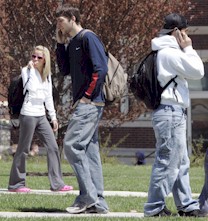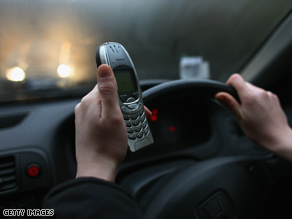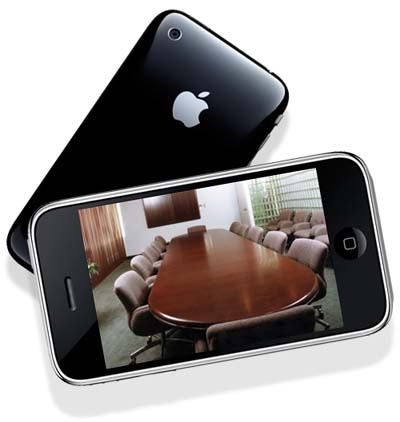|
Mainland High School
Suitable for a Disaster: ISTF 08-1835 |
||||||
|
Home
Introduction Contest Components One Two  Product Product
Three Fabrics History of Fabrics Smart Fabric Projects Sensors Nano Sensors Power Production Communication Cell Phones 3G Phones Data Transfer Helikites Interoperability Microwaves Relief Agencies Telecommunication Project Assessment Team |
Component One
Prepare a 200- to 300-word history about the National Critical Technology (NCT)
technical application your team has selected to solve a local or national problem.
Information and communication is the National Critical Technology most often associated
with our ability to thrive as a country. We have seen this throughout history as
the communications media changed from word of mouth to print to where we are today
with electronic media of various types providing a platform for the rapid exchange
of information around the block and around the world. As more and more people get
involved with developing technology to better communicate, we have run into problems
associated with different companies developing different technology that is not
able to readily communicate with other forms of technology.
A total of $12,357,500 is available for competitive grants to eligible
state, local, or tribal governments' principal EOCs. State Administrative Agencies
(SAAs) must apply on behalf of eligible applicants. Applications are due to DHS/FEMA
from the SSAs on Feb. 27, 2009.
Cite three detailed examples of research done in the past 3 to 5 years which focused
on the NCT technical application your team selected. Include:
 the funding agency, the funding agency,
 the principal investigator's name, and the principal investigator's name, and
 the institution where the research is or was being conducted. the institution where the research is or was being conducted.
Before we present our three grants, we would like to highlight a patent application made by Betty Eng, Kofi Cobbinah, and Janna Kimel on January 1st, 2009 to the United States Patent and Trademark Office which we feel is a cornerstone to our project's success.
Based on the research your team has done, explain how the NCT application chosen
has advanced scientific knowledge.
Telecommunication has come a long way since Alexander Graham Bell made the first
telephone call and Marconi sent the first telegraph (wireless) message. Instant
messaging and Internet browsing are no longer restricted to having access to a computer
connected by an ethernet wire to the Internet. Walk down a crowded street and note
how many people you see doing something on a cell phone. It almost goes without
saying that the cell phone has found its place in our everyday life.
For most people, the inability to contact any person at any time would result in a significant loss of productively. Most people do not even ponder whether there are incapatibilty issues, they just assume that their telecommunications devices are interoperable. Cellular providers usually allow communication between same network callers for free, but, in certain contracts, they allow free calls to anyone from any network listed on their calling plan. Even video-conferencing with 3G-phones is becoming an everyday occurrence for many people, allowing them to work from home and other previously inaccessible locations. Interoperability is arguably one of the most critical aspects in disaster situations. If a group in need can not communicate, or to those providing help, human and material resources will be difficult to allocate. Perhaps the best civilian-level example of current interoperability is dialing 911. In February, 1967, President Lyndon Johnson's Commission on Law Enforcement and Administration of Justice suggested that police officers have a single number for emergency situations. In 1968, AT&T announced that "911" would be the universal emergency number. Instead of needing to call the correct number of the fire department, police department, or ambulance, you can now call one number and the proper authorities will be notified. This service greatly expedites the rescue process making it more efficient. When natural or manmade disasters occur over a larger scale, interoperability becomes not just important, but crucial. Interoperability just means that there is a system in which measurements and functions can be reciprocated. Apple introduced an application to easily install 32-bit releases of WindowsXP on to their Mac, called Boot Camp. Apple's operating system Leopard, in conjunction with Boot Camp, allows Mac users the ability to run Windows applications on their laptops in a separate partition this allowing Mac users the best of both worlds. Interoperability in shipping has also adjusted to today's global market. The wide diversity of railroad track gauges, barge waterway routes, and transoceanic cargo ships, has lead to the rise of large metal containers that have specific dimensions. These dimensions are compatible to trucks and trains. This makes for faster transitions from type to type of transportation. Thus another perfect example of interoperability between countries by sea to land. CIO - Qualcomm Announces Wireless Reach BREW Application Funding Winners http://www.cio.com/article/29034/Qualcomm_Announces_Wireless_Reach_BREW_Application_Funding_Winners Dispatch Magazine On-Line - History of 911 http://www.911dispatch.com/911/history/ Drawbridge to Europe Inc. - What is a GSM phone? http://www.drawbridgetoeurope.com/digest/vol-II/article1.htm Fiber-based nanotechnology in clothing could harvest energy from physical movement http://www.eurekalert.org/pub_releases/2008-02/giot-fni020908.php Georgia Research Tech News- Power Shirt: Fiber-based Nanotechnology in Clothing Could Generate Electricity by Harvesting Energy from Physical Movement http://www.gtresearchnews.gatech.edu/newsrelease/power-shirt.htm German Way - Cell Phones in Europe http://www.german-way.com/handy.html India PRwire- Tata Consultancy Services Wins the Grand Prize in QUALCOMM's Wireless Reach BREW Application Funding Program http://www.indiaprwire.com/pressrelease/telecommunications/200703072145.htm Macromolecules and Interfaces Institute at Virginia Tech http://www.mii.vt.edu/PDF/MIISpring%202007.pdf Metric versus U.S. Units http://www.about.ch/various/unit_conversion.html National Emergency Number Association - 9-1-1 Facts http://www.nena.org/pages/ContentList.asp?CTID=22 National Science Foundation- MSPA-MPS: Experimental design for achieving consistent and high yield in the controlled synthesis of nanostructures http://www.nsf.gov/awardsearch/showAward.do?AwardNumber=0706436 Newswise Science News - Power Shirt Generates Electricity from Physical Motion http://www.newswise.com/articles/view/537652/#imagetop Photonics - Project Aims to Create New Materials, Nanodevices http://www.photonics.com/Content/ReadArticle.aspx?ArticleID=29349 Qualcomm http://www.qualcomm.com/ Slow travel - Bringing your electronics to europe http://www.slowtrav.com/europe/electronics.htm US Patent & Trademark Office - #20090005016 http://appft1.uspto.gov/netacgi/nph-Parser? Wireless - What is BREW? http://www.developer.com/ws/brew/article.php/1454711 World Standards - Electricity around the World http://users.telenet.be/worldstandards/electricity.htm FEMA - Get Disaster Information http://www.fema.gov/hazard/index.shtm FEMA - FY 2009 Emergency Operations Center Grant Program http://www.fema.gov/government/grant/eoc/index.shtm U.S. Government Affairs Committee http://www.iaem.com/committees/GovernmentAffairs/GovtAffairs.htm#EOCGrants121608 Health News - Conflicting studies on possible health threats http://blog.cleveland.com/health/2008/11/conflicting_studies_on_possibl.html CNN.com - Safety council urges ban on cell phone use while driving http://edition.cnn.com/2009/TECH/01/12/cell.phone.driving/index.html Verizon Wireless copies Alltel's My Circle http://mobilitytoday.com/news/009326/verizon__my_circle TFTS - Apple iPhone Video Recording and Video Conferencing http://nexus404.com/Blog/2009/02/03/apple-iphone-video-recording-video-conferencing-applications-apple-patent-hints-at-future-iphone-capabilities/ Mac OS X Leopard http://www.apple.com/macosx/features/bootcamp.html The New York Times - Technology - run Windows and Mac OS Both at Once http://www.nytimes.com/2006/04/13/technology/13pogue.html?_r=1 Port25 - Shipping Containers and Standardization http://port25.technet.com/archive/2006/11/28/shipping-containers-and-standardization.aspx |



